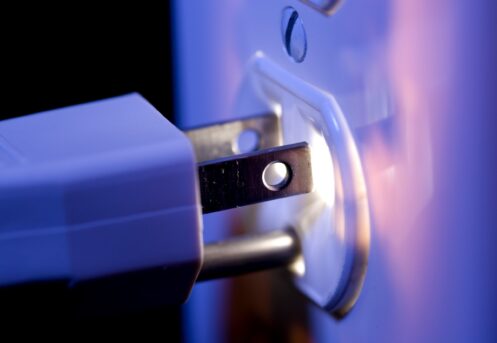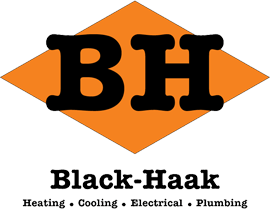
In Oshkosh, there are thunderstorms 30 to 40 days per year on average. When there’s thunder and lightning, you need to protect your home and its electronics from power surges, and one of the best ways to do that is by using a surge protector. However, how essential are these for managing the excess electricity of lightning strikes? In our guide, we’re going to explain why surge protectors are an essential part of Oshkosh’s home life.
How Surge Protectors Work
Surge protectors work by limiting the amount of voltage that can reach your devices and appliances. They use a metal oxide varistor (MOV) that absorbs any excess voltage that flows through the protector so that only the prescribed amount gets through. When excess electricity flows into the protector, the resistance drops significantly, allowing the excess electricity to flow into the ground. This is why you must plug surge protectors into a grounded outlet to work correctly.
How Surge Protectors Benefit Oshkosh Residents
Thunderstorms aren’t the only cause of power surges. On average, you can expect about 120 volts of power from your electrical panel to your light fixtures and wall outlets. This flow of power isn’t always constant, but typically, you can expect power to vary between zero volts and 169.
When you exceed this upper number, this is when a power surge happens. So, effectively, if you overload your system, you can expect a power surge that will burn out outlets or damage appliances. Power surges are very damaging and can even cause fires.
When you employ a surge protector, they prevent power overages so that you and your home are safer. Surge protectors deliver value so that neither thunderstorms nor power overages will cause dangerous surges.
Surge Protectors: Your Options
When it comes to surge protectors, you have two options that will protect your home from power surges. These are whole-home and plug-in surge protectors. Both deliver value, but to help you understand them, let’s take a detailed look at each.
Plug-In Surge Protectors
The first thing that you should know about surge protectors is that they are not power strips. A power strip is just an extender that adds multiple outlets to a single wall plug. While this is useful for those looking to expand their outlet numbers, these do nothing to protect a home from power surges.
Surge protectors, on the other hand, manage electricity provided by wall plugs into the items plugged into the protector. If there’s a power surge, the surge protector passes the excess electricity into the grounded wall outlet. If this protection isn’t in place, the excess electricity will damage the wires and the source outlet.
Surge protectors and power strips both provide extra outlets when you need them. Since there’s a layer of protection when purchasing a surge protector, we at Black-Haak suggest selecting a surge protector over the other option when possible.
Additionally, with the appliance-level protection inherent in plug-in surge protectors, it’s always a good idea to plan on the types of appliances and devices that you need to plug into the surge protector. Since these will control the distribution of the voltage to each plugged-in device, it’s a good idea to use them to protect sensitive and expensive electronics.
Here’s a list of potential devices or appliances that you can plug into a plug-in surge protector:
- Televisions
- Laptops
- Desktop computers
- Sound bars
- Gaming systems
- Audio systems
- Smart phones and tablets
- Cable and satellite boxes
- Telephones, faxes, and modems
- EV chargers
It’s not recommended that you plug high-powered devices into plug-in surge protectors. These include appliances like refrigerators, freezers, microwaves, or space heaters. This is because the high power draws of these types of devices will quickly overload a surge protector and cause it to shut off the device. This can happen when you’re least expecting it and cause your food to go bad in a refrigerator or freezer or cause the loss of heat in an area where a space heater is warming.
Whole-Home Surge Protectors
Whole-home surge protectors, as the name indicates, protect everything on the home’s electrical panel, rather than the handful of devices on a plug-in variation. These monitor the panel for surges, and when these happen, they redirect the excess electricity to the ground to protect the electronics in the system.
These are a more all-encompassing variation of surge protection, and to employ these in your home, you’ll need a professional electrician. This is the best option for protecting large appliances and electronics from power surges. These include the items we previously mentioned as well as whole-home electronics and appliances, like HVAC systems.
Neither of the two surge protector types will protect your home’s electrical systems from direct lightning strikes. Still, when the electrical surge from a strike is farther away, either system will be able to handle it.
The Risks of Not Using Surge Protection
It’s not worth the headache of not having some form of surge protection. Without this form of electrical overload protection, damage can happen to your devices. In fact, this can even occur because of distant lightning strikes, and there’s always the risk of fire since overloads cause outlets to overheat. Power surges also significantly damage digital media. After an overload, your devices may begin to slow down, and you can even lose digital files.
How to Select a Plug-In Surge Protector
When selecting a surge protector that you plug into your outlets at home, it is important that you consider the length of the outlet that you need. These come in various sizes, so you can have a longer cord. Consider the number of outlets that you need as well as whether it is beneficial to have USB slots. If you need additional spacing for the outlets, consider this as well before you decide which option fits your needs. If you are plugging sensitive devices into the surge protector, consider getting one with a joule rating above 1,000.
When to Replace a Surge Protector
As a general rule, it’s a good idea to replace a surge protector that’s been in use for three to five years. This is because the MOV becomes less effective over time and loses its capacity to regulate power surges. Fortunately, some surge protectors include indicator lights to help you determine if they are effective at managing power surges.
Protecting Against Power Surges Is Critical in Oshkosh
With so many options out there, there’s really no good reason for you to tolerate unprotected power surges. At Black-Haak, we have been a part of this community since 1956, and we understand the electrical needs of Oshkosh residents. We specialize in adding surge protection to local homes so that the storms and power demands of residents won’t interfere with safety.
Today’s a great day to give us a call at Black-Haak. We’ll take the time to get your panel upgraded for optimal protection!

